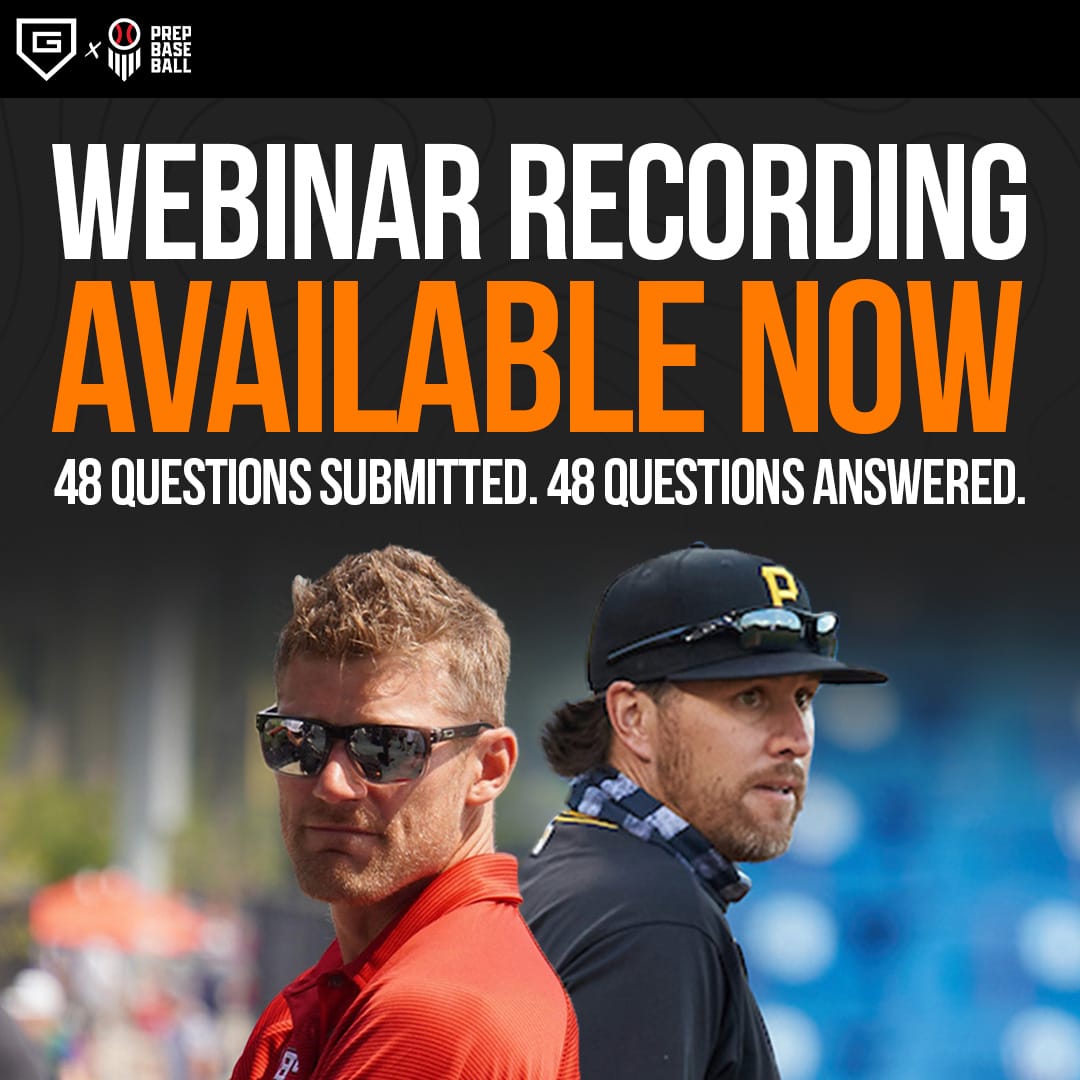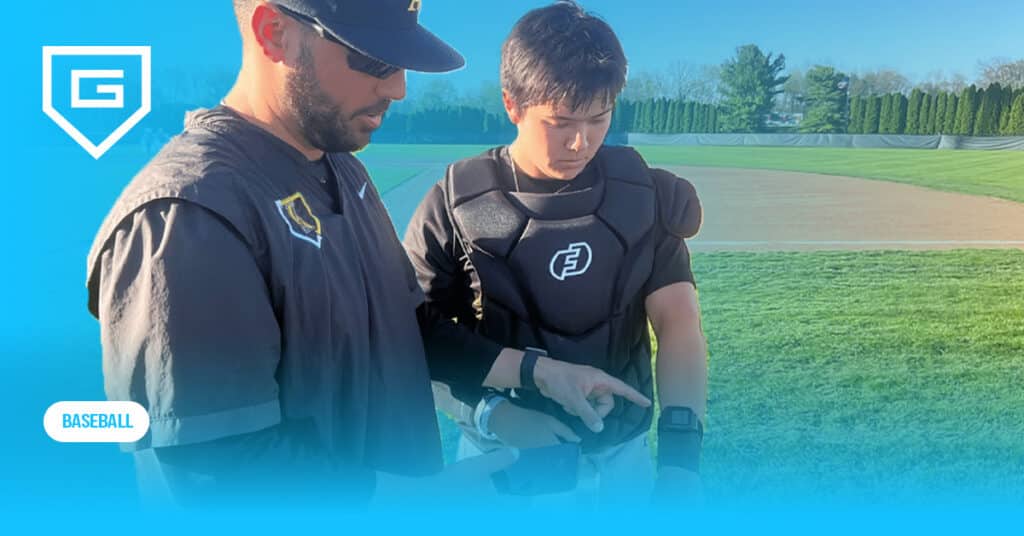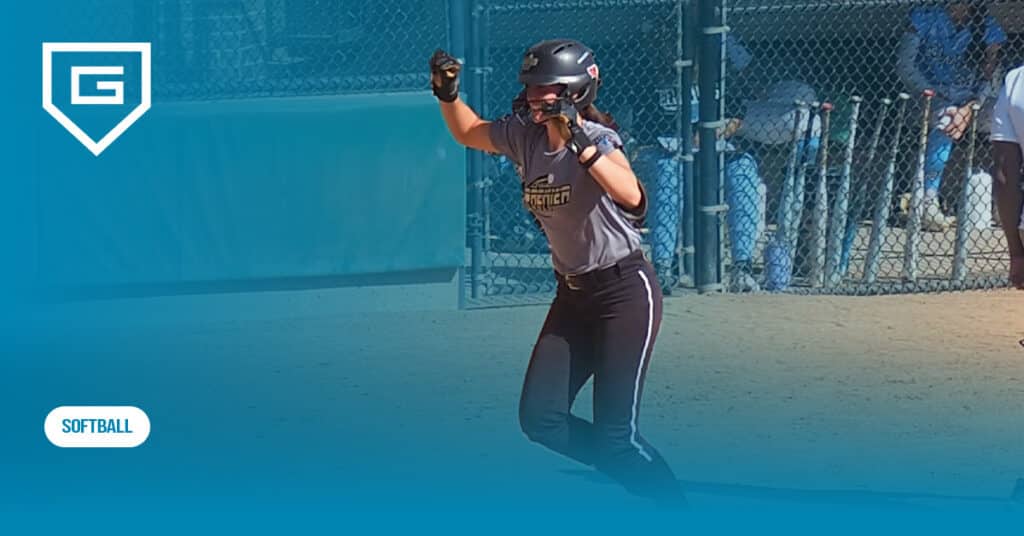Key Youth Baseball Hitting Drills Every Coach Should Know
Reading Time: 12 minutes
Reading Time: 12 minutes
Teaching young players how to hit lays the groundwork for success in baseball. The right youth baseball hitting drills build better swings, tighter timing, and more confidence at the plate.
When you know which drills work, practice gets more useful for first timers and kids who’ve played before.
This article covers some simple, practical drills every coach should try. You’ll see why they matter and how to implement them in your training.
Introduction to Youth Baseball Hitting Drills
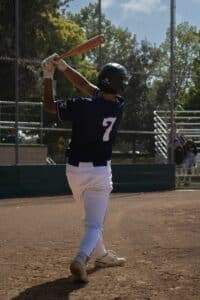
Learning to hit well in baseball takes time and repetition. Hitting drills let players build crucial skills step by step.
These youth baseball practice drills strengthen players’ swings and:
- Sharpen their hand-eye coordination
- Improve timing and balance
- Build strength and confidence at the plate
Mixing fun drills with the right youth baseball equipment keeps kids interested and eager to learn. Coaches who blend games, drills, and advanced gear see players improve faster.
Understanding The Fundamentals Of Hitting In Baseball
Before starting drills, players must learn the basics of hitting.
First, they should focus on upper body, stance, and grip: standing with feet shoulder-width apart, knees slightly bent, and holding the bat with both hands, firm but relaxed.
Maintaining good balance and posture helps them react quickly to any pitch. Players need to keep their weight evenly distributed and focus on hand-eye coordination to track the ball closely from the pitcher’s hand to the bat.
Young hitters improve most by mastering these fundamentals before moving on to more advanced youth baseball drills.
Setting Up Effective Batting Practice Sessions
Start every batting practice by making the atmosphere positive and relaxed. Praise effort and remind players that mistakes help them learn.
Check your youth baseball gear before every session. Having the right equipment makes things safer and keeps practice running smoothly.
| Item | Purpose |
| Batting helmets | Protect players’ heads from injury |
| Bats | Sized correctly for comfort and control |
| Baseballs | Ensure continuous practice without delays |
| Batting tees | Develop consistent swing technique |
| Pitching screen | Shield pitcher/coach from batted balls |
| Bases/cones | Define running paths and field boundaries |
Stay organized by following a structured youth baseball training program. It helps your players build habits and get more out of every practice.
You can set up batting practice on an open field or in a batting cage, if you have access to one. A cage keeps balls contained and lets hitters focus.
Use markers to show players where to stand and where to aim their hits. Rotate players so everyone gets equal time at bat and in the field.
Keep drills short to hold their attention and make sure every player stays active. A good session mixes basic tee work, soft toss, and live pitching.
Give clear instructions for each drill and always offer feedback in a supportive way. Your positive attitude helps kids develop a love for the game even more.
Core Youth Baseball Hitting Drills For Skill Development
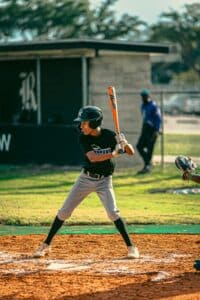
Strong hitters don’t just pop up out of nowhere. They work on drills that help them learn to hit with solid contact and control. Each drill improves a different skill, from swing basics to timing and reacting in real game situations.
Tee work drills for building consistency
Tee work allows players to work on their swing, hand-eye coordination, and balance without rushing since the ball’s just sitting there.
Coaches can easily adjust the tee to hit different heights and spots over the plate, which makes this a great drill for developing consistent swings.
Players should work on hitting inside, outside, high, and low pitches. It prepares them for different pitch locations in games.
Key tips:
- Players should adopt a proper stance and grip
- They must keep their eyes on the ball
- They should finish every swing fully
Tee drills help teach muscle memory and reinforce good mechanics. Athletes can try hitting 10 balls at each spot.
Soft toss drills for timing and rhythm
Soft toss drills help hitters develop timing and rhythm, both crucial for handling live pitching. In this drill, a coach or teammate gently tosses the ball from the side in front of the batter.
Players should focus on swinging at the right moment, not just making contact. They should try to keep their hands inside the ball and drive it up the middle or to the opposite field. It teaches them to wait for the ball and react smoothly.
Key points for soft toss drills:
- The toss should be underhand and slow
- Aim for line drives
- Take time between swings
Soft toss can be done indoors or outdoors. This drill helps players prepare to react and builds confidence in making solid contact.
Front toss drills for real-game simulation
Front toss drills help players get used to pitches that feel like a real game without facing live pitching. A coach or partner throws balls underhand behind a screen in front of the hitter.
The ball comes faster and on a more realistic path. Players practice tracking the ball and swinging with good mechanics. Coaches can mix up speeds and locations to make it more challenging.
Tips for success:
- Start each rep in a balanced, ready stance
- Keep the swing level
- Adjust for inside and outside pitches
Front toss allows hitters to practice reading the ball out of the pitcher’s hand. It’s one of the top youth baseball drills for skill development.
Live pitch drills for advanced hitters
Live pitch drills are for players ready to take the next step. Batters face pitchers or coaches throwing from a normal distance and speed.
It helps players get used to real pitches, like fastballs, curveballs, and change-ups. Kids get to learn how to read the type of the pitch and where it’s going. Younger age groups will only face fastballs, while older kids start to work on hitting off speed pitches.
Players need to keep their balance, stay strong on their back leg, and be ready to adjust their swings rapidly. Hitting live pitches helps with quick thinking and reaction times.
Key things to remember:
- Watch the pitcher’s arm slot
- Stay relaxed under pressure
- Think about where to drive the ball
These youth baseball hitting drills help players bridge the gap between practice and real games. Young hitters improve timing, pitch recognition, and confidence in tough moments.
Specialized Baseball Hitting Drills For Young Players
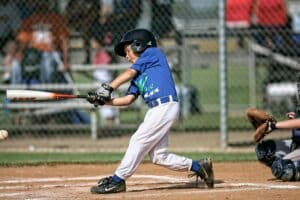
Specialized drills help young players build good habits early on. Let’s explore the most important ones.
Top hand drills for bat control and power
The top hand guides the bat through the swing. To build top-hand strength, athletes can try one-handed drills.
The batter should hold the bat with only the top hand and take short, controlled swings at a ball on a tee. It can also be done using soft toss, where a partner gently tosses the ball.
This drill improves control and helps prevent the wrists from rolling too soon. Ten to fifteen repetitions at a time are sufficient for beginners.
Switching hands allows players to work on both sides while focusing on balance and form. Coaches favor this drill because it teaches players to keep the bat level through the hitting zone.
Bottom hand training for bat speed
The bottom hand provides power and speed to the swing. Training this hand encourages quick bat acceleration through the zone.
Players should practice by gripping the bat with only the bottom hand and hitting a ball off a tee. They should take smooth, fast swings, aiming for solid contact.
When coaching younger children, it’s important to remind them to keep their elbow down and wrist firm during the follow-through. Using a lighter or shorter training bat can help if they struggle with control.
Performing eight to twelve repetitions on each side helps avoid fatigue. This drill is effective for short and long swings, making it useful for little league and tee-ball hitters.
One-handed drills for strength and mechanics
One-handed drills build muscle, coordination, and promote correct swing paths. Players alternate hands, using either the top or bottom hand, while swinging at a ball on a tee.
A light bat is recommended to keep the drill safe. The focus should be on hitting the center of the ball, rather than just making contact. You can also use a wooden dowel without a ball to get the form down before using a bat and hitting a ball.
This drill can be performed with stationary balls and soft toss for an added challenge. Younger players learning basic mechanics benefit from this exercise by developing stronger wrists and forearms.
Ten swings per hand are sufficient. The drill should be kept short, highlighting maintaining good form rather than distance.
Two-ball drills for hand-eye coordination
Two-ball drills sharpen focus and help players track pitches. This drill uses two different colored balls.
A coach or teammate performs a soft toss, throwing both balls at once, and calls out a color while the balls are in the air. The player must swing at the ball that matches the called color.
You can also complete this drill with standard baseballs. In this case, two balls are tossed and the coach or teammate calls out which ball to focus on – usually top or bottom.
This activity trains the eyes to quickly pick up and react to pitches. It is especially effective for young players or tee-ball athletes who want to improve their ability to see the ball and respond with the correct swing.
The drill should be kept short—about 8 to 10 tosses per round is sufficient. It adds fun and excitement to practice, making it easier for kids to develop solid hand-eye coordination in an engaging way.
How To Improve Baseball Practice With GoRout Diamond

GoRout Diamond is an advanced baseball pitch-calling system that improves team coordination, communication and performance on the field.
Coaches can directly send pitch calls, offensive plays, and defensive shifts to players’ wearable devices, eliminating traditional hand signals and ensuring a secure and efficient connection.
How it works for coaches

GoRout Diamond runs on GoRout Air™, a cellular-based network that doesn’t require Wi-Fi, so the system works anywhere you play.
- Create offensive and defensive plays in the web app
- Send messages instantly to your players’ devices with one tap
- Track pitch calls, shifts, and signs without hassle
- Use position-specific messaging for clear, direct instructions
The platform also has AI-powered analytics, giving you pitch intent vs. result data to refine strategies and improve team performance.
How it works for players
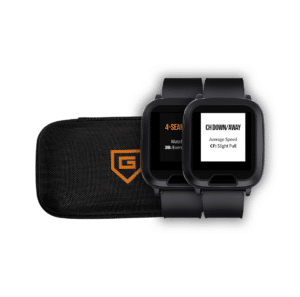
The devices are durable, weather-resistant and can withstand the game. They come ready to use out of the box with a 100% breakage warranty, so no setup or pairing is required, letting players focus on their performance.
- Players wear devices that show secure and encrypted calls from coaches
- They just check the screen for instructions—no guesswork
- Bright screens make it easy to read signs, rain or shine
The batteries can last for over 12 hours on a single charge.
Why choose GoRout Diamond?
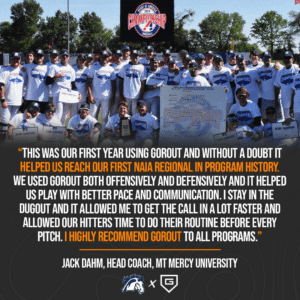
GoRout Diamond is the premier coach-to-player communication system for baseball teams because of its simplicity, reliability and features.
The system is easy to use, so teams can get up and running quickly with no steep learning curve.
- Customize for your team—use one device or a whole set
- Enjoy fast communication that keeps everyone focused and ready
- Get useful data to track player development
Bridge the gap between practice and game day execution, and build a more cohesive and responsive team.
Get a quote today or visit the web shop.
Team-Based Youth Baseball Batting Drills For Game Readiness

Getting your team ready for real games starts at practice. Group drills help kids learn to work together and build strong batting skills. They also make practice more fun and exciting for everyone. Here are a few ideas.
Relay hitting drill
Split the team into two or three groups and have each group line up behind a batting tee. The first player hits, runs to a cone about 20 feet away, and returns.
As soon as the runner touches the cone, the next player goes. The first team to finish wins.
Batting practice games
Turn batting practice into a game by giving points for hitting targets or line drives. Keep score between teams for a little friendly competition.
It keeps kids focused and helps them improve quickly.
Simulated game scenarios
Set up plays like bases loaded or runners on second and third. Rotate players so everyone gets a turn at bat and in the field.
Simulated games teach kids to react to real situations and help the team play together comfortably.
Common Challenges In Youth Baseball Hitting
Lots of young hitters deal with the fear of the ball. This worry makes it tough to step into the box with confidence. Try soft toss drills and tee work to help kids relax and trust themselves at the plate.
Timing is another big challenge for youngsters. Making good contact gets tricky if their swing is too early or too late. Front toss and timing drills train them to meet the ball at the right moment.
Poor swing mechanics can make hitting the ball hard feel impossible. Watch for dropping the back shoulder, casting, or stepping out—these are common for young players.
It’s important to keep all your players engaged in practice. Boredom sets in quickly if drills drag on or aren’t challenging enough.
Use short, high-energy drills to keep everyone active and learning. Give feedback and make adjustments during practice.
If you’re curious, check out common youth baseball coaching mistakes.
Coaching Tips For Maximizing Baseball Players’ Development

Giving constructive feedback is huge for helping players grow. When someone makes a mistake, start with what they did well, then offer a simple tip for improvement. Keep your feedback short so players know exactly what to fix.
Motivating young hitters goes a long way, too. Celebrate effort as much as results. Notice small wins, like trying a new stance or swing, and let your players know that trying their best matters most.
Try these ways to motivate:
- Use positive words often
- Reward hustle and a good attitude
- Set small, achievable goals
Make sure all players are active, get plenty of swings, and leave practice wanting to come back. Solid practice plans help keep things organized and fun.
Get more tips on how to coach youth baseball.
Safety Considerations In Hitting Drills For Youth Baseball Players

When you’re coaching youth baseball, keeping players safe has to be your top priority. Safe practices make the game a lot more fun for everyone involved.
Proper protective gear
Every hitter should wear a helmet during all batting drills. Helmets protect against head injuries from wild throws or batted balls.
It’s a good idea to use batting gloves, too. Remind players about athletic cups and mouthguards if those are needed for your league.
Catchers always need full gear, even when it’s just practice. No exceptions there.
Safe practice environment
Set up practice in a spot with enough space between each player. Keep hitting stations far apart so nobody gets clipped by a stray bat or ball.
Get extra adults or coaches to help supervise if you can. More eyes make a huge difference.
Always keep first aid supplies nearby. Make sure you know how to get help fast if someone gets hurt.
Encourage your players to speak up if they notice something unsafe or if they’re hurt. It builds trust and keeps everyone alert during practice.
Tracking Progress And Setting Goals
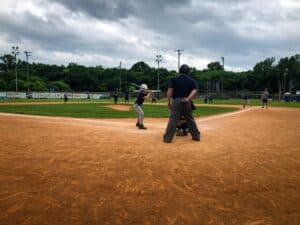
Watching your players improve is one of the best parts of coaching. Setting clear goals and tracking progress keeps everyone focused and motivated.
You can use GoRout Diamond to collect performance data and analyze where your team stands. It helps you spot where players are getting better and what skills need more work.

You can also try using a simple table to track stats for each hitter—things like contact rate, swing speed, or how many solid hits they get each week.
Set individual goals for every player, like making contact on 70% of swings or working on better balance in the batter’s box. Encourage players to share their goals and support each other.
Team goals help everyone pull together, whether raising the team batting average or picking each other up after tough games.
Check in with your players often. Give feedback, celebrate small wins, and let them know you notice their hard work.
Conclusion About Youth Baseball Hitting Drills
Focusing on basic hitting drills helps young players build confidence and learn good habits early. Each drill gives your team a simple way to practice key skills, like timing and bat-to-ball contact. Keeping drills short and focused keeps kids engaged and eager to improve.
Using quality baseball training aids for youth makes a difference in practice. GoRout Diamond stands out because it is modern, practical, durable, easy to use, and made for youth baseball. You’ll find that your team makes faster progress with each training session.
Check out the web shop for more details or get a quote today to see how GoRout Diamond can help you build a stronger, more confident team.
FAQs About Youth Baseball Hitting Drills
How can you improve youth baseball hitting?
Start with regular practice and simple drills. Focus on hand-eye coordination, balance, and a solid grip.
Use tee work and soft toss nets. These basics help young players build a good foundation, even if it initially feels a bit repetitive.
What is the best hitting drill for baseball?
Tee work stands out as one of the most effective drills. Kids can work on their swing and make better contact without worrying about a moving ball. Soft toss drills and smaller balls, like whiffles, also help a lot.
How do you teach a kid how to hit a baseball?
Keep instructions simple and break things down into a few steps. Show them how to stand with feet shoulder-width apart and to keep their eyes on the ball.
Start with slow swings using a tee before moving to live pitching. Don’t forget to encourage them—confidence goes a long way.
How should you coach a 9 to 10-year-old baseball player?
Short, fun drills work best. Always throw in some positive feedback.
Keep practices engaging and avoid making them drag on. Mixing skill work with games helps players stay excited and actually look forward to learning.




